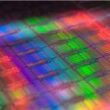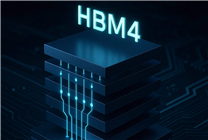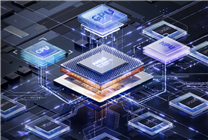Summary:
- Samsung is set to lead the launch of advanced HBM4e memory, featuring unprecedented speed and bandwidth.
- Key improvements include a pin speed of 13Gbps and a bandwidth of 3.25TB/s, doubling energy efficiency compared to HBM3e.
- The company’s success will largely depend on NVIDIA’s AI chip sales and market demands.
On October 15, Kuai Technology revealed that the evolving landscape of high-performance AI computing necessitates not only robust GPU capabilities but also significant memory bandwidth, a challenge increasingly addressed by high-bandwidth memory (HBM) solutions. As we approach the HBM4 era next year, there are great expectations for the subsequent HBM4e generation.
Samsung, who has previously lagged behind SK Hynix during the HBM3 and HBM3e phases, is strategically positioning itself to reclaim leadership with the introduction of HBM4e in 2027. The anticipated specifications promise substantial advancements in performance.
Samsung’s HBM4e memory is projected to achieve pin speeds of 13Gbps, leading to astonishing bandwidth levels of 3.25TB/s at a 2048-bit width. This represents a significant 25% increase over earlier projections. In comparison, HBM4 operates at a standard speed of 8Gbps with a bandwidth of 2TB/s. However, under the specific requirements set by NVIDIA, mass-produced HBM4 has already seen a speed uptick to 11Gbps and a bandwidth rating of 2.8TB/s.
Given that the HBM4e launch is still two years away, there is potential for these speeds to increase further as development progresses.
Another crucial aspect to consider is power consumption. Samsung has indicated that the energy efficiency of HBM4e will improve significantly, with estimates showing just 3.9 picojoules (PJ) per bit. This indicates that power consumption could be halved in comparison to HBM3e, representing a notable step forward in energy-efficient computing.
Yet, challenges persist. Samsung’s HBM4e faces issues with yield rates, with reports suggesting that the yield of the 1c DRAM memory particles may not exceed 50%. This scenario could translate into elevated cost pressures for the company.
The pivotal question for Samsung remains its relationship with NVIDIA. The success and volume of HBM4e shipments will depend heavily on the sales of NVIDIA’s AI chips. While AMD may have a more lenient platform certification process, it is clear that their AI graphics card sales do not measure up to NVIDIA’s dominant market presence.
The technological landscape is evolving rapidly, and strategies need to adapt accordingly. Samsung’s advancements in HBM technologies symbolize not merely an upgrade in memory performance but a response to growing demands in the AI ecosystem. The trajectory set by HBM4e will be vital in shaping the future of high-performance computing.
As the race for memory technology heats up, all eyes will be on how these developments pan out and what they mean for both manufacturers and consumers in the coming years.






